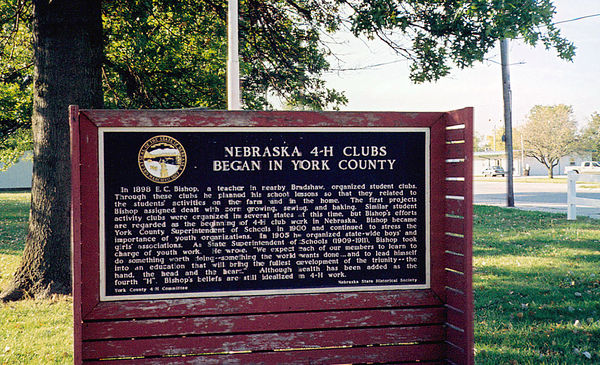Our Historical Markers across Nebraska highlight fascinating moments and places in our state’s past.
Today, we’re focusing on E. C. Bishop, the teacher who is regarded as beginning 4-H club work in Nebraska.

Marker Location
4-H Dr, York, York County, Nebraska
Marker Text
In 1898 E. C. Bishop, a teacher in nearby Bradshaw, organized student clubs. Through these clubs he planned his school lessons so that they related to the students’ activities on the farm and in the home. The first projects Bishop assigned dealt with corn growing, sewing, and baking. Similar student activity clubs were organized in several states at this time, but Bishop’s efforts are regarded as the beginning of 4-H club work in Nebraska. Bishop became York County Superintendent of Schools in 1900 and continued to stress the importance of youth organizations. In 1905 he organized state-wide boys’ and girls’ associations. As State Superintendent of Schools (1909-1911), Bishop took charge of youth work. He wrote, “We expect each of our members to learn to do something worth doing–something the world wants done. . . and to lead himself into an education that will bring the fullest development of the triunity–the hand, the head and the heart.” Although health has been added as the fourth “H”, Bishop’s beliefs are still idealized in 4-H work.



